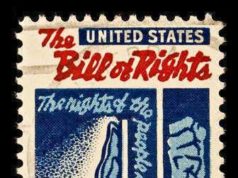
The 3/5th compromise, also known as the Three-Fifths Compromise, was a decision made during the Constitutional Convention in 1787. The compromise addressed the issue of how to count slaves for the purpose of representation in Congress.
At the time of the Constitutional Convention, slavery was still legal in many parts of the United States, and many Southern states had large numbers of slaves. The southern states wanted to count each slave as a full person when determining their representation in Congress. This would have given them a significant advantage in Congress.
The Northern states, however, did not want to count slaves as full persons for the purpose of representation. They believed that slaves should not be counted at all, as they were not citizens and could not vote or participate in the political process. They also argued that counting slaves as full persons would give Southern states too much power in Congress.
The 3/5th compromise was a solution to this dilemma. Under the compromise, slaves would be counted as three-fifths of a person for representation purposes. This meant that every five slaves would be counted as three persons when determining congressional representation.
While the compromise was intended to solve a difficult problem, it reflected the deep divisions that existed between Northern and Southern states over the issue of slavery. It was also a key factor in the eventual outbreak of the Civil War, as the Southern states continued to argue for their right to maintain slavery and defend the 3/5th compromise.
Today, the 3/5th compromise is often seen as a shameful chapter in American history. It was a compromise made in order to advance political interests at the expense of human rights. However, it was also a necessary compromise that helped to keep the country unified at a time when it was still struggling to establish itself as a nation.
In conclusion, the 3/5th compromise was a decision made during the Constitutional Convention in 1787. Its purpose was to address the issue of how to count slaves for the purpose of representation in Congress. While it was intended to be a solution to a difficult problem, it reflected the deep divisions that existed between Northern and Southern states over the issue of slavery. Today, it is seen as a compromise that was made at the expense of human rights, but it was also a necessary compromise that helped to keep the country unified during its early years.
The 3/5 Compromise: Navigating a Divided Nation Through Representation
The 3/5 Compromise, an intricate facet of American history, emerged as a critical solution to a deeply divisive issue that permeated the fabric of the young nation. Rooted in the question of how enslaved individuals should be counted for the purpose of apportioning representation in Congress, this compromise highlights both the complexities of the time and the delicate balancing act that sought to unify a fledgling nation while acknowledging the fraught institution of slavery.
At the heart of the 3/5 Compromise lay the fundamental struggle between the Northern and Southern states over the issue of slavery. The Southern states, with their agrarian economies reliant on enslaved labor, sought to maximize their representation in the House of Representatives, leveraging their enslaved populations as a means to bolster their political influence. The Northern states, on the other hand, grappled with the moral and ethical implications of recognizing enslaved individuals as part of the population for the purposes of representation.
In this charged atmosphere, the Constitutional Convention of 1787 convened in Philadelphia to deliberate over the creation of a new government. The issue of counting enslaved individuals for representation emerged as a formidable hurdle, threatening to derail the entire endeavor. The solution, borne out of the need to forge a compromise between the two sides, culminated in the 3/5 Compromise.
The compromise stipulated that enslaved individuals would be counted as three-fifths of a person for the purpose of determining both representation in the House of Representatives and direct taxes levied by the federal government. This seemingly arbitrary fraction was a product of negotiation, reflective of the prevailing power dynamics and the desire to strike a balance that would keep the nation intact. The compromise ensured that the Southern states would have greater representation than if only their free population was considered, while also acknowledging the moral complexity of counting enslaved individuals as full citizens.
The 3/5 Compromise was undoubtedly a pragmatic solution that held the fragile union together, but it also carried deep implications for the nation’s future. It recognized the uncomfortable reality that slavery was not merely a Southern institution but an integral part of the nation’s economy and political landscape. Moreover, it set the stage for an ongoing tension between the North and the South, one that would eventually erupt into the devastating conflict of the Civil War.
While the compromise achieved its immediate goal of forming a more perfect union, its legacy is marred by the perpetuation of an oppressive system. The 3/5 Compromise perpetuated the dehumanization of enslaved individuals, reducing their worth to a fraction in the eyes of the government. It underscores the tragic contradiction between the lofty ideals of freedom and equality espoused by the Declaration of Independence and the reality of a nation built on the subjugation of a portion of its population.
The 3/5 Compromise’s significance extends beyond its immediate impact on representation and taxation. It serves as a poignant reminder of the complexities inherent in nation-building and the challenges of balancing diverse interests and ideologies. It raises timeless questions about the morality of compromise, particularly when confronted with deeply entrenched injustices. The compromise also prompts us to critically examine the role of leadership and decision-making in times of crisis, as well as the long-term consequences of such decisions.
Ultimately, the 3/5 Compromise stands as a testament to the intricate nature of compromise in a democratic society. It demonstrates the lengths to which leaders are willing to go to preserve unity and stability, even when faced with profound moral dilemmas. It also highlights the painful trade-offs that accompany compromise, as well as the imperative of continuously striving for a more just and equitable society.
As we reflect on the 3/5 Compromise, it is essential to approach its legacy with nuance and understanding. It serves as a cautionary tale, reminding us of the dangers of allowing deeply rooted injustices to persist in the name of political expediency. It also underscores the importance of engaging in ongoing conversations about representation, equality, and justice to create a more inclusive and equitable society. The 3/5 Compromise, while deeply flawed, provides a compelling historical lens through which we can examine the complexities of compromise and its lasting impact on the American experience.
The proposal for apportionment for the determination of each State’s number of seats in the House of Representatives became an issue when the Constitution was being drafted in 1787. Aside from being a complex system and method for calculating the population through the Census and then establishing a number of seats for representation, the issue as to who was eligible to be counted for the population was a topic of controversy. However, it is no surprise that this agreement is known as the Three-Fifths Compromise, for the Constitution itself was born out of a compromise between the Framers of the Constitution.
However, the Three-Fifths Compromise is arguably the most controversial topic, for its delegates that all slaves of a particular State are to be counted as three-fifths of a white person. The population of slaves would be counted as three-fifths in total when apportioning Representatives, as well as Presidential electors and taxes.
The Three-Fifths Compromise was proposed by James Wilson and Roger Sherman, who were both delegates for the Constitutional Convention of 1787. However, the Three-Fifths Compromise has its roots further back in history, dating back to the Continental Congress in 1783. The Compromise was a result of the apportionment of taxes being related to land values.
Initially, taxes were levied not in accordance to the population numbers, but the actual value of the land. Many states began to depreciate the value of the land in order to provide for relief from their taxes. A committee was held that would rectify the situation by implementing the apportionment of taxes in relation to the State’s population. However, this idea was met with the dispute of how to consider slaves in the apportionment process and the actual ratio of slaves to free people at that time.
For the most part, those who opposed slavery only wanted to consider the free people of a population, while those in favor wanted to include slaves in the population count. This would provide for slaveholders to have many more seats in the House of Representatives and more representation in the Electoral College. Many ratios were considered, such as three-fourths, one-half, and one-quarter. After much debate, it would be James Madison that would suggest the Three-Fifths Compromise. However, the Three-Fifths Compromise would not be adopted until the Constitutional Convention because the Compromise was not approved by all of the states and the Articles of Confederation required a unanimous vote.
The implementation of the Three-Fifths Compromise would greatly increase the representation and political power of slave-owning states. The Southern states, if represented equally, would have accounted for 33 of the seats in the House of Representatives. However, because of the Three-Fifths Compromise, the Southern states accounted for 47 seats in the House of Representatives of the first United States Congress of 1790. This would allow for the South to garner enough power at the political level, giving them control in Presidential elections.
However, as time moved forward, the Three-Fifths Compromise would not provide the advantage that the Southern states and slave-owners had hoped for. The Northern states grew more rapidly in terms of population than the South. Even though Southern states had essentially dominated all political platforms prior to the Civil War, afterward that control would be relinquished slowly but surely.























